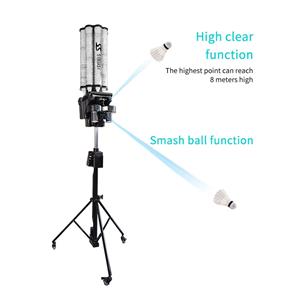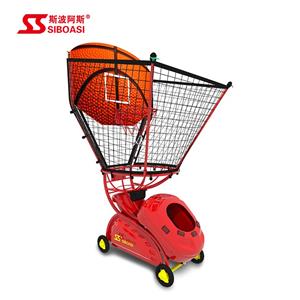The origin of badminton development
The origin of badminton development

As early as two thousand years ago, a game similar to badminton appeared in China, India and other countries. China is called Shuttlecock, India is called Pune, and Western Europe and other countries are called Shuttlecock. In the 1870s, the British soldiers brought back the Pune game they learned in India as a recreational activity after dinner and rest. According to legend, at the end of the 14th century, Japan saw a sport where cherries were inserted into beautiful badminton balls, and the two used wooden boards to fight back and forth. This is the original form of badminton.
Modern badminton was born in England. In 1873, in the town of Birmington, Glasgowshire, England, there was an earl named Bowert who held a garden party in his territory. Several retired military officers who returned from India introduced to everyone a way of hitting back and forth with a racket across the net. People are very interested in the game of playing shuttlecock. Because this activity is very interesting, it soon became popular in the upper social field. "Badminton" (Badminton) has become the English badminton name. In 1893, 14 British badminton clubs formed the Badminton Association.

In the 18th century, in the city of Pune, India, a game similar to today's badminton activities appeared. The game was woven into a ball with woolen thread, feathers were inserted, and people held a wooden racket, and the ball was hit back and forth in the air through the net. not long time.
Badminton was introduced to my country in 1920, and it developed rapidly after liberation. In the 1970s, my country's badminton team has been among the best teams in the world.
In the 1970s, the international badminton scene was evenly divided between Indonesia and my country. In the 1980s, the advantage has turned to our country, indicating that my country's badminton sport has reached the world's advanced level. Badminton was listed as an official event at the 1992 Barcelona Olympic Games, with a total of 5 competitions including men's and women's singles, men's and women's doubles and mixed games. There are also many other badminton games, such as the Thomas Cup, Uber Cup and the World Badminton Championships. Development In 1877, the British Bath Badminton Club was established, and the first badminton game rules were published in the UK.
In 1893, the world's first badminton association was established in Britain. In 1899, the association held the first "All England Badminton Championships", which is held once a year and has been carried forward to this day.
At the beginning of the 20th century, badminton spread from Scandinavia to the countries of the Commonwealth, spread to Asia, America, Oceania, and finally to Africa.
In 1934, the International Badminton Federation was established, headquartered in London.
In 1939, the International Badminton Federation passed the "Badminton Competition Rules" that all member states abide by.
In the 1920s and 1940s, badminton in European and American countries developed rapidly, among which the level of Britain, Denmark, the United States, and Canada was quite high. In the 1950s, Asian badminton developed rapidly, and Malaysia won two Thomas Cup championships. At the same time, the Indonesian team has made innovations in technology and play style and quickly achieved a dominant position. After the 1960s, the development of badminton gradually moved to Asia.

In May 1981, the International Badminton Federation regained China's legal seat in the International Badminton Federation, which opened a new page in the history of international badminton and entered a glorious era when Chinese badminton players dominated the world.
In the 1988 Seoul Olympics (24th), badminton was listed as a performance event, the 1992 Barcelona Olympics (25th) was listed as an official event, and the 1996 Atlanta Olympics (26th) were mixed. Double-listed as a competition event. Since then, badminton has entered a new period of development.
In 2006, the new rules of badminton were officially implemented after three months of trial. It was first adopted in the Tangyu Cup that year.
Domestic development In 1954, a group of young men who served the motherland returned to China and brought back advanced badminton skills. At the same time, a national training team was formed. Subsequently, my country also established badminton teams in several major cities along the southeast coast with returned overseas Chinese youths as the backbone. Under the guidance of the idea of "breaking away superstition, emancipating the mind, and walking your own way", the Chinese badminton players summarized both at home and abroad. The experience and lessons of badminton sports have been sorted out and the technical materials have been sorted out, combined with their own sports practice to explore, and continuously improve the training methods. Among them, the Fujian Provincial Sports Team mainly made reforms and breakthroughs in technical techniques, and the Guangdong Team mainly made reforms and breakthroughs in footwork. At the same time, it draws on the successful experience of my country's table tennis, and through the summary of years of training and competition practice experience, put forward the "self-oriented, fast-oriented, and offensive-oriented" active play style. Later, after constant summarization and improvement, the "fast, hard, accurate and lively" technical style of Chinese badminton was gradually formed. With the ambition of climbing the technical peaks of the world badminton and winning glory for the country, Chinese athletes have absorbed some advanced sports training methods from abroad, studied hard and practiced hard, and consciously implemented the "difficulty, strictness, and actual combat". , The "three requirements and one big" training policy of carrying out large-volume training, the level of sports skills has been further improved.

However, due to political reasons, my country did not join the International Badminton Federation at that time, so it did not participate in the World Championships. However, in international mutual exchanges, he has repeatedly competed with the world's strong teams at the time and achieved excellent results. It is praised as "the uncrowned king" and "champion of champions" by many foreign telegraphs.
Until May 1981, the International Badminton Federation regained my country's legal seat in the International Badminton Federation, fulfilling the long-cherished wish of Chinese athletes for many years-to compete in the world badminton arena, compete for the world championship, and win glory for the country.
In July 1981, at the 1st World Games (Los Angeles, USA), Chinese athletes Chen Changjie, Sun Zhian, Yao Ximing, Liu Xia and Zhang Ailing won the men's and women's singles and doubles championships. In 1982, my country participated in the All England badminton competition for the first time. Zhang Ailing won the women's singles championship, Xu Rong and Wu Jianqiu won the women's doubles championship, and Twin Jin won the men's singles championship. In the same year, the Chinese team participated in the "Toms Cup" for the first time. In the very unfavorable situation of 1:3 on the first day, they fought hard and finally defeated the strong badminton team Indonesia 5:4 to win the championship. In 1984, in Kuala Lumpur, Malaysia, the Chinese women's badminton team won the 10th Uber Cup.
Immediately afterwards, a number of top badminton players in the world such as Yang Yang, Zhao Jianhua, Xiong Guobao, Li Yongbo, Tian Bingyi, Lin Ying, Wu Dixi, Li Lingwei, Han Aiping and others emerged in my country, which further established my country’s badminton technical level in the world. The foundation of the leading position in the world has won numerous gold medals for the motherland in a series of world competitions, creating a glorious period in the history of Chinese badminton. In the 1990s, with the retiring of a number of outstanding athletes such as Yang Yang, Zhao Jianhua, and Li Lingwei, my country temporarily experienced a period of failure. After years of hard work in Indonesia, a number of rookies represented by Adi and Wang Lianxiang emerged. In addition, Europe has also re-emerged, and there are sometimes newcomers in South Korea and Malaysia, and the world badminton has entered an era of rivalry.
In the Barcelona Olympic Games, my country's badminton event missed the gold medal. It wasn't until 1995 that he gradually stepped out of the trough and won the "Sudirman Cup" for the first time. In the 1996 Atlanta Olympic Games, Ge Fei and Gu Jun won the women's doubles championship, achieving a zero breakthrough in my country's badminton event in the Olympic Games. In 1997, Chinese athletes won the "Sudirman Cup" again, and at the same time won three gold medals in women's singles, women's doubles and mixed doubles at the World Championships, and they have embarked on a journey of rebuilding their glory.
On April 6, 2019, the China Badminton Association officially announced the badminton level evaluation standards. In this rating system, athletes at level 3 and above implement the technical standards for athletes promulgated by the State Sports General Administration. Athletes from level 4 to level 6 can participate in various mass badminton competitions hosted by the badminton associations at all levels. Grade athletes and 7 children's grades are obtained by participating in skill tests.
Game rules scoring system: (1) The 21-point system is adopted, that is, the first player to score 21 points wins, and 3 games 2 wins. In each round, if one side first scores 21 points and leads by at least 2 points, the round will be considered a winner, otherwise the game will continue; if the two sides are tied for 29 and one side leads by 1 point, the round will be considered a winner.
(2) In the new system, every ball is scored, and except for special circumstances (such as the floor is wet and the ball is broken), players can no longer request to interrupt the game. However, when one team leads by 11 points in each round, the game is technically suspended for 1 minute, allowing both sides to wipe sweat, drink water, rest, etc.
(3) The scorer has the right to serve. If his current score is odd, he will serve from the left; if the current score is even, he will serve from the right. In the third round or only one round of the game, when one team scores 11 points first, the two teams exchange courts.

Could contact us for buying badminton shooting machine for your training, phone and whatsapp: 0086 136 6298 7261




